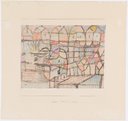Back to top
- Born
- 1879 in Münchenbuchsee
- Died
- 1940 in Muralto
Biography
Persons connected to Paul Klee
- Stuck, Franz von Teacher (male)
- Arndt, Alfred Pupil (male)
- Batz, Eugen Pupil (male)
- Best, Jacob Pupil (male)
- Beyer-Volger, Lis Pupil (female)
- Braun, Albert Pupil (male)
- Hofmann, Otto Pupil (male)
- Kuhr, Fritz Pupil (male)
- Pfeiffer, Henri Pupil (male)
- Stölzl, Gunta Pupil (female)
- Winter, Fritz Pupil (male)
- Caspar-Filser, Maria Friend (female)
- Erfurth, Hugo Friend (male)
- Grohmann, Will Friend (male)
- Kandinsky, Wassily Friend (male)
- Niestlé, Jean Bloé Friend (male)
- Reichel, Hans Friend (male)
Groups and institutions Paul Klee belongs to
- Bauhaus Art academy
- Blauer Reiter Artists' association
- Der Moderne Bund Artists' association
- The Blue Four Artists' association
- New Secession Artists' association
- Sema Artists' association











